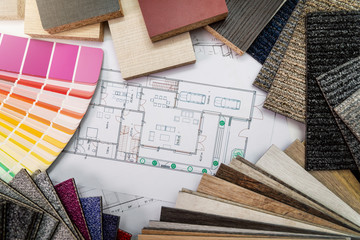Choosing the Right Custom Home Designer
When you build your custom home, you have a lot of design decisions to make. Interior Designers Utah can help you navigate these choices and ensure your home’s budget and schedule stay on track. A custom home’s floor plan is one of the most important aspects. The layout should be designed to meet your family’s needs and lifestyle.

Choosing the right architect or designer for your custom home design project is crucial to ensure the best possible outcome. This professional will help you turn your dreams into blueprints, navigate the process of obtaining the necessary permits and regulations, and ensure that your home is built to the highest standards.
The first thing you should do when searching for an architect is determine your unique needs and style. You can do this by creating a “wish list” of must-haves, would-be-nice-to-haves, and must-not-haves for your dream home.
Planning to build a custom home is one of the most exciting and rewarding things you can do. But, it doesn’t come without some challenges. Designing and building a custom home requires a team of professionals to get the job done right. Here are some key steps you’ll need to follow:
It would be best if you had a clear idea of what your dream home looks like and how it will function. This will help you determine what features are important and how much room you have to work with. Once you have a good idea of what you want, it’s time to start drawing up floor plans. You can either draw a sketch or use home-design software to get the job done quickly and accurately.
Floor plans are one of the most important aspects of custom home design. They help you visualize everything that you want in your home and ensure that it fits all of your needs and expectations.
They’re also great for letting you test out different ideas before you make any major decisions. For example, you can change a room’s size and window placement before you begin construction.
Floor plans also help you determine how to layout rooms and what furniture will work best in each space. Having a good understanding of your preferences early on can save you a lot of money and stress down the road!
Choosing the right materials is one of the most important things to consider when it comes to custom home design. This is because they directly impact the appearance, cost, functionality, sustainability, and performance of the building.
Moreover, these materials also play an important role in the overall lifespan of the home. The climate in your area is also a major factor to consider when selecting the right building material for your custom home.
The right custom home builder will be able to help you decide on the right building materials for your project. They will take into account the style of your custom home, as well as the budget you have to work with.
When it comes to budgeting for a custom home design, it’s crucial to be realistic. If you don’t, you risk being left with a finished home that doesn’t meet your needs. To begin, research what it costs to build your dream home in your area and set a baseline for your project. This way, you can avoid wasting money on features that won’t fit within your budget.
It would be best if you also considered the cost of land improvements, such as tree removal and landscaping. It’s important to budget for these line items because they can add a significant amount of money to the overall project.
Interior design professionals can choose to further their education by participating in professional organizations. These groups give people the opportunity to network and share ideas. Through continuing education, interior designers can hone their skills and earn promotions within their career.
Interior design professionals can take classes online as well. Several websites offer continuing education courses for aspiring professionals. One of these is the American Interiors Council. The AIC offers several programs that are focused on the areas of residential, commercial, and industrial spaces. The classes offered are divided into beginner, intermediate, and advanced levels, with a certificate program at the intermediate level being offered by the university. There are also professional development seminars offered to current professional interior designers.
